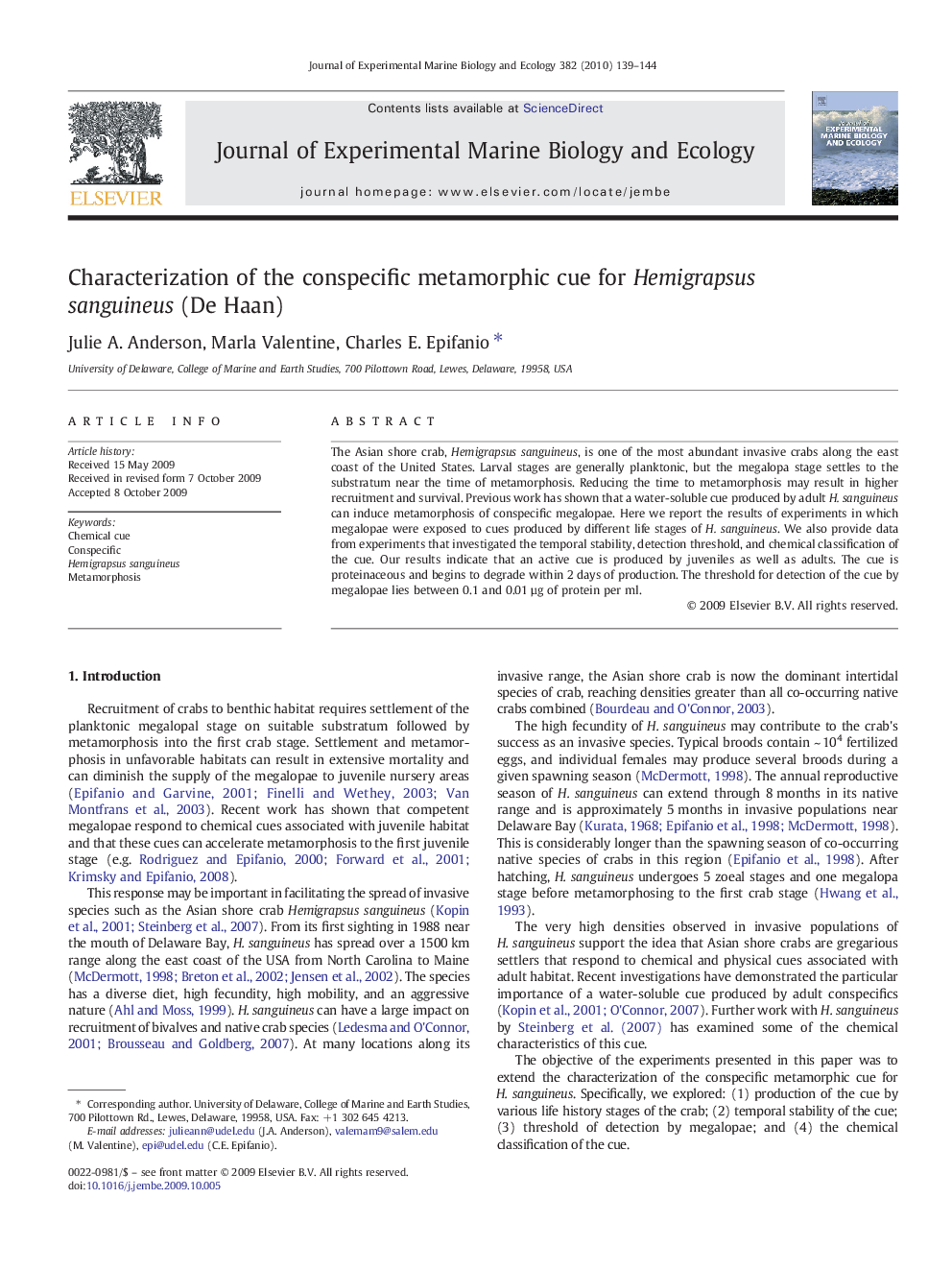| Article ID | Journal | Published Year | Pages | File Type |
|---|---|---|---|---|
| 4396680 | Journal of Experimental Marine Biology and Ecology | 2010 | 6 Pages |
Abstract
The Asian shore crab, Hemigrapsus sanguineus, is one of the most abundant invasive crabs along the east coast of the United States. Larval stages are generally planktonic, but the megalopa stage settles to the substratum near the time of metamorphosis. Reducing the time to metamorphosis may result in higher recruitment and survival. Previous work has shown that a water-soluble cue produced by adult H. sanguineus can induce metamorphosis of conspecific megalopae. Here we report the results of experiments in which megalopae were exposed to cues produced by different life stages of H. sanguineus. We also provide data from experiments that investigated the temporal stability, detection threshold, and chemical classification of the cue. Our results indicate that an active cue is produced by juveniles as well as adults. The cue is proteinaceous and begins to degrade within 2 days of production. The threshold for detection of the cue by megalopae lies between 0.1 and 0.01 µg of protein per ml.
Related Topics
Life Sciences
Agricultural and Biological Sciences
Aquatic Science
Authors
Julie A. Anderson, Marla Valentine, Charles E. Epifanio,
